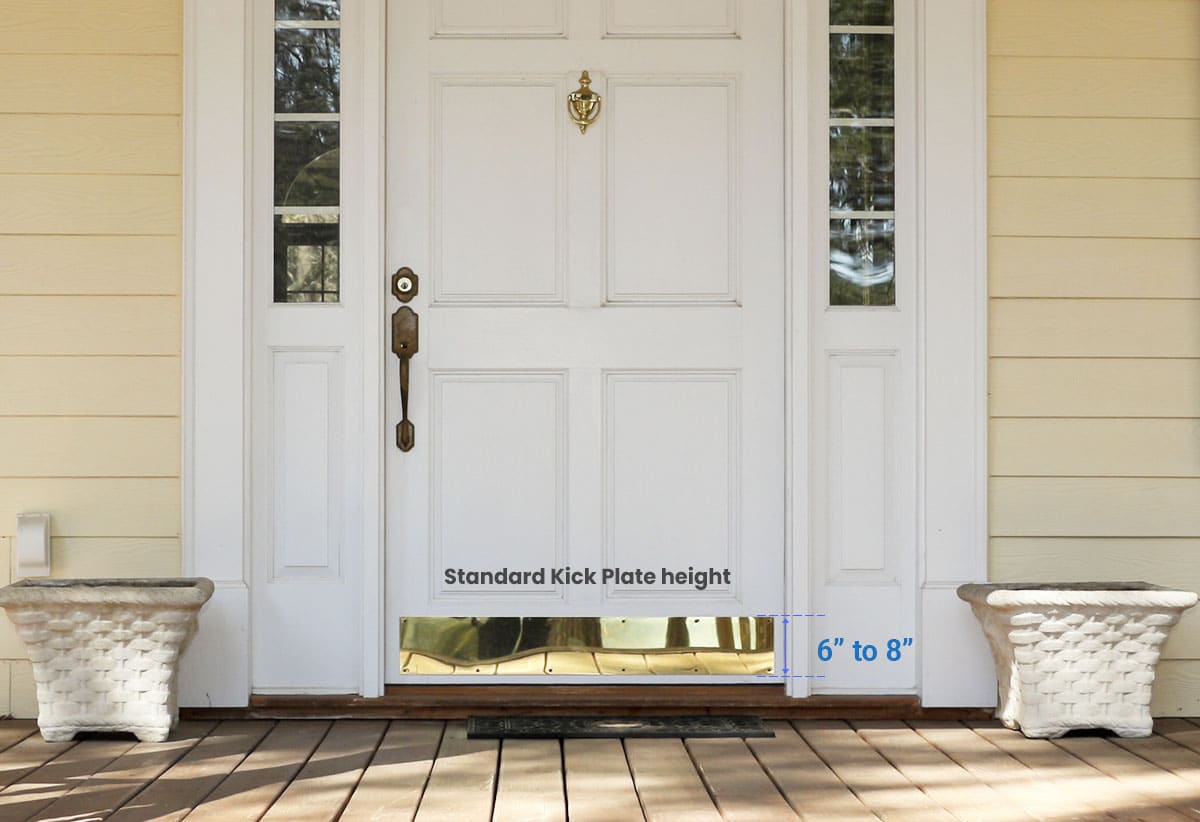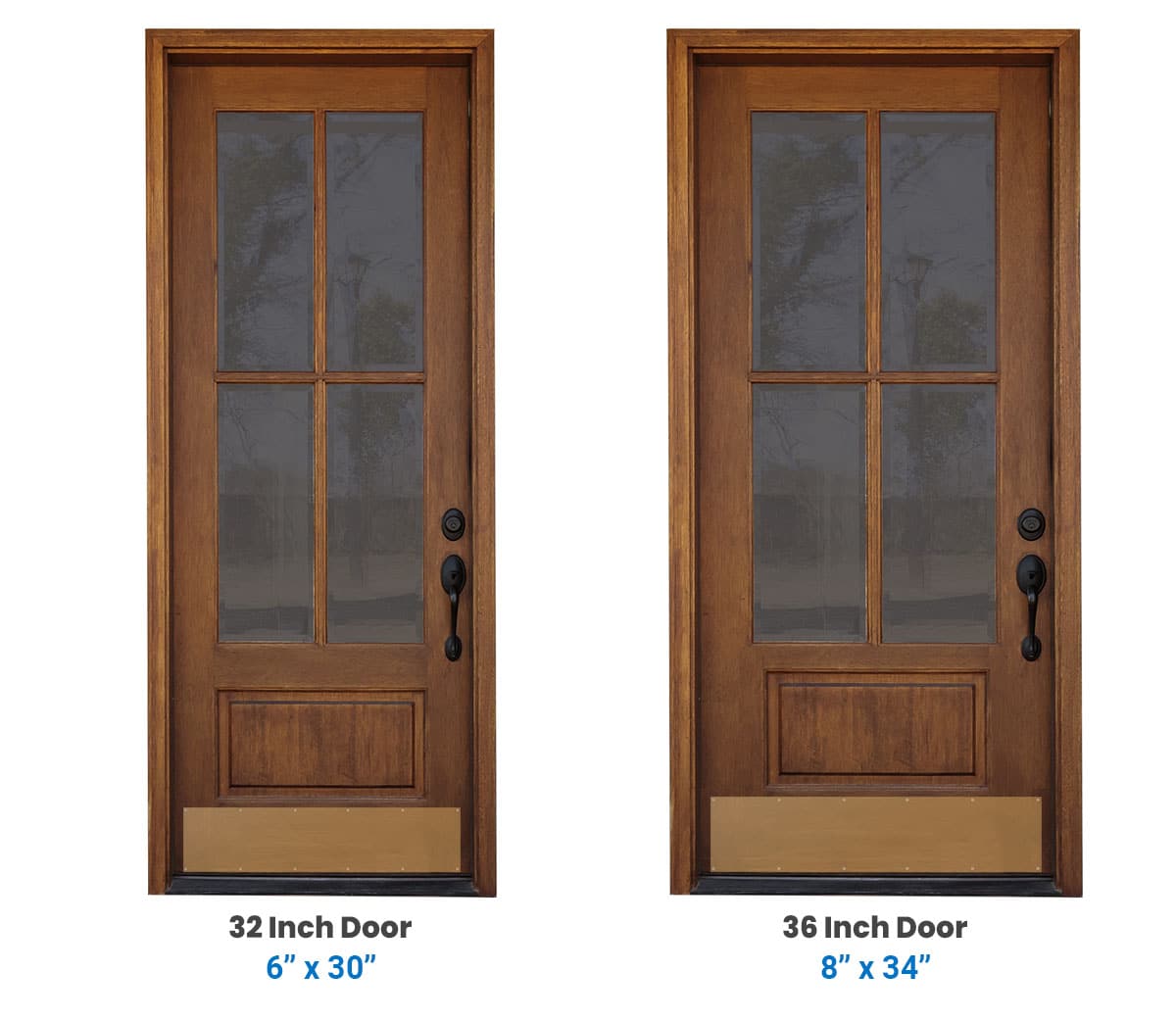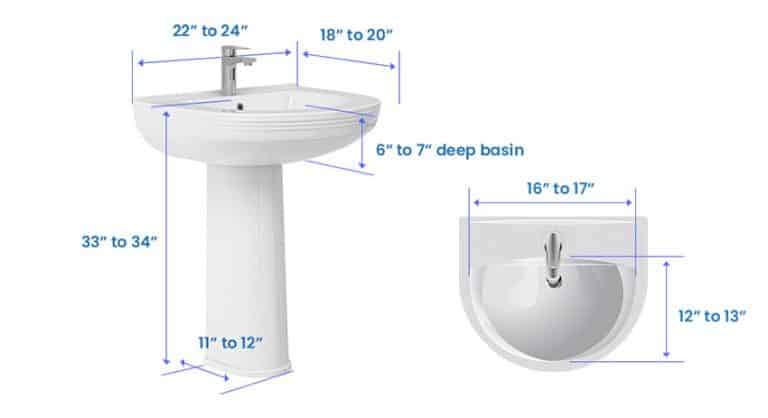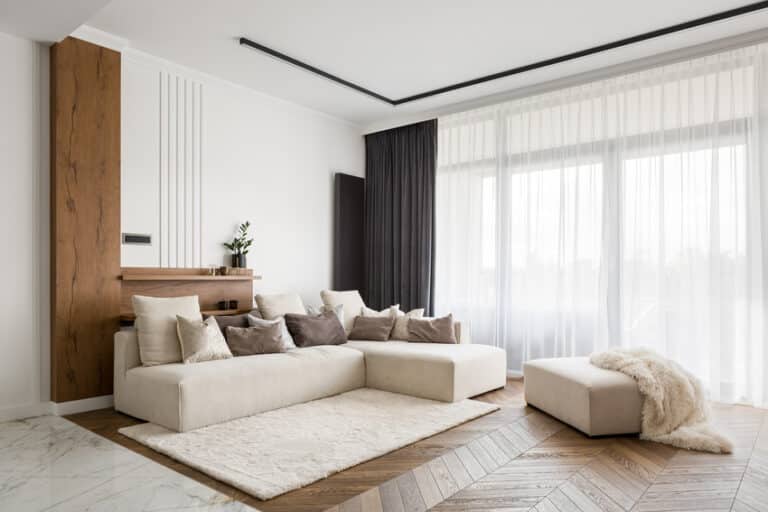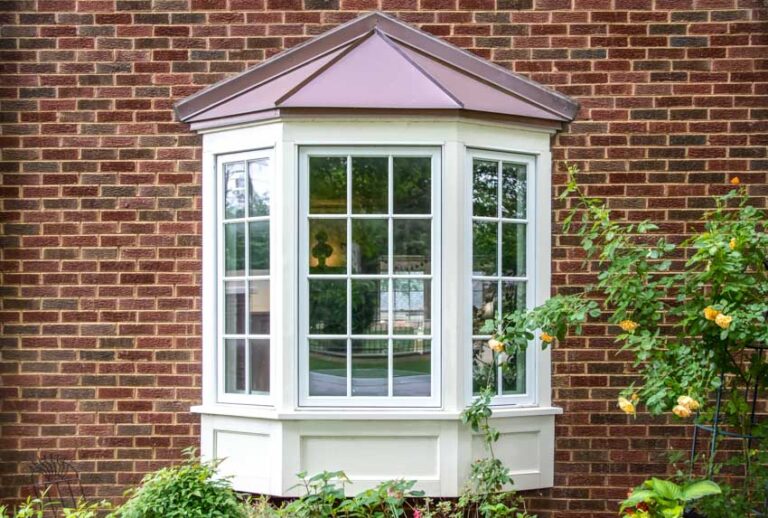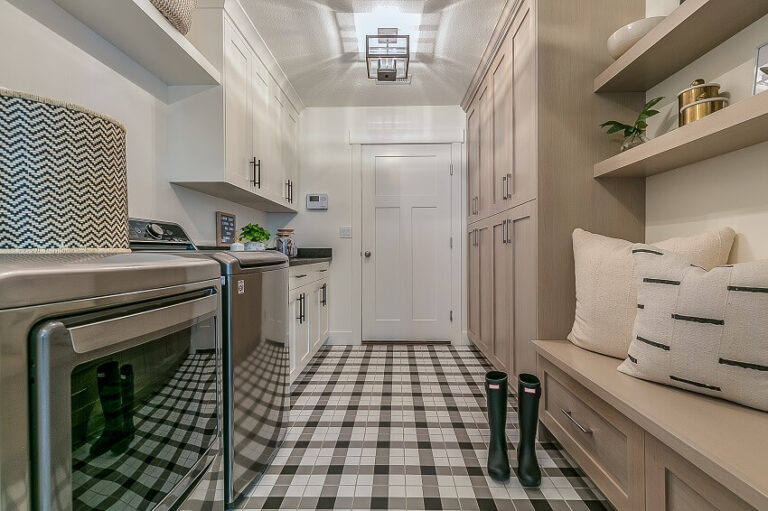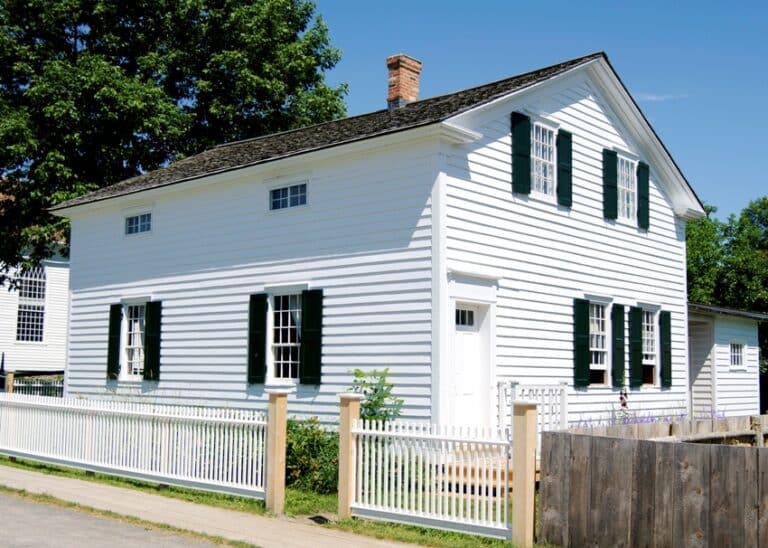Door Kick Plate Sizes (Standard Dimensions & Materials)
Below, I discuss the different door kick plate sizes, including standard door base protective guards, sizing requirements, and the best materials for protectors.
Doors are some of the most often overlooked, abused, and neglected building fixtures (at least for some folks). Intruders can destroy it, or a shopper can kick the panel swinging. Fortunately, door additions can protect this fixture against scratches, dents, scuffs, and other signs of damage.
One such solution is a kick plate (or “kickplate”). And if you’re looking to safeguard your entrance’s pristine condition, knowing door kick plate sizes is a must.
What Size is a Standard Door Kick Plate?
As the name suggests, kick plates are protective barriers featuring a heavy-duty material that can withstand crushing and blunt forces. It’s like a shield homeowners install at the door’s lower section, approximating where the foot would hit the base of the panel if the user accidentally or purposely “kicks” the fixture.
Most homes feature a kick plate spanning 6 inches (about 15 centimeters) from the door’s bottom edge (or near it) and moving upward. However, some folks prefer a more substantially-sized kickplate of about 8 inches (about 20 centimeters).
Although homeowners can customize their anti-scuff panels, most agree the plate should not be smaller than 6 inches or 15 centimeters (that would make it a “mop plate”) and not exceed the door’s half-height (that would make the barrier an “armor plate”).
Manufacturers recognize the value of personal preferences of kick plate sizes, prompting them to design and produce a range of dimensions.
For example, one can pick a 6-inch-high (15 centimeters) and 18-inch-wide (46 centimeters) kickplate for tiny storage doors. Alternatively, a 21-inch-tall (53 centimeters) and 48-inch-broad (1.2 meters) plate should be perfect for a massive gate.
Still, a 6- to 8-inch-tall kick plate is the sweet spot for most doors, making it the “standard” fixture protection of this type.
What Size Toe Plate for 32 Inch Door?
Installing an anti-scuff, anti-scratch protective panel attachment is easy. However, one must pick the correct size relative to the door’s width. Otherwise, opening and closing this fixture can be problematic.
Thankfully, contractors and DIYers have a “handy” rule for determining the ideal length (side-to-side span) for any door kickplate. Subtracting two inches (about 5 centimeters) from the door’s width should give homeowners the perfect kick protector.
For example, a standard 32-inch-wide (81 centimeters) door will benefit most from a 30-inch-long (76 centimeters) anti-kick protective panel. This measurement offers a 1-inch allowance on both sides of the barrier, accommodating weatherstripping elements and the door jamb.
Moreover, the allowance creates a “frame” on the fixture’s lower section, adding to its appeal.
As for its “height,” homeowners can pick a 5-inch (13 centimeters) version if family members are more cautious about their habits. On the other hand, households with more “aggressive” members might want to consider an 8-inch-tall (20 centimeters) kickplate (or even taller).
It’s worth pointing out that a 6-inch x 30-inch kick plate is quite common in 32-inch interior doors.
What Size Foot Plate for 36 Door?
Families and establishments with larger-than-usual sizes can observe the “less 2-inch rule” to determine the kick panel size.
For instance, a 34-inch-long (86 centimeters) kickplate should fit nicely on a 3-foot-wide (91 centimeters) door. It’s the perfect protection against scratches, scuffs, and other superficial damage to exterior doors.
Most homes with 36-inch openings use an 8-inch x 34-inch plate to safeguard the fixture’s bottom section, although families can customize it.
Kick Guard Requirements
Kick plates are straightforward panels anyone can add to fixtures to protect the underlying surface. The requirements are minimal, but we will attempt to simplify them further in the following.
• Protective capabilities
Most protective lower door panels are metal (i.e., stainless steel and aluminum), although some could be plastic or vinyl. The idea is to get a barrier between the panel surface and anything that can hit it (i.e., shoes, wheels, boxes, metals, and other objects).
Hence, the guard must be sturdy enough to never crack or balk under these pressures or forces. Ideally, the panel must absorb or dissipate crushing energy and prevent it from reaching the underlying surface.
• Sizing requirements
Protective elements must span the fixture’s width to maximize surface protection. For instance, a 36-inch-wide door will stay “pristine” if the panel “covers” its entire width.
However, doors aren’t fixed fixtures. They swing open and close and have other elements requiring space (i.e., door jamb or frame). Hence, the plate’s final size should allow such movements to occur, requiring adjusting the size by subtracting 2 inches from the door’s width.
What Gauge is a Door Foot Plate?
Protective door plates vary in thickness from about 0.036 inches or 0.9 millimeters (20 Gauge) to 0.063 inches or 1.6 millimeters (16 Gauge). Some projects use a 0.05-inch (18 Gauge) version in stainless steel, bronze, brass, or aluminum construction. The thickets are 0.079 inches or 2 millimeters (14 Gauge).
As a rule, protective toe kick plates with lower Gauge numerical values (i.e., 16 Gauge vs. 20 Gauge) are thicker, allowing them to absorb more impact forces and safeguard the underlying structure.
Hence, doors in high-traffic areas can benefit from a 14 Gauge kickplate, while an 18 Gauge panel should be sufficient for most homes.
What is the Best Material for a Door Bottom Plate?
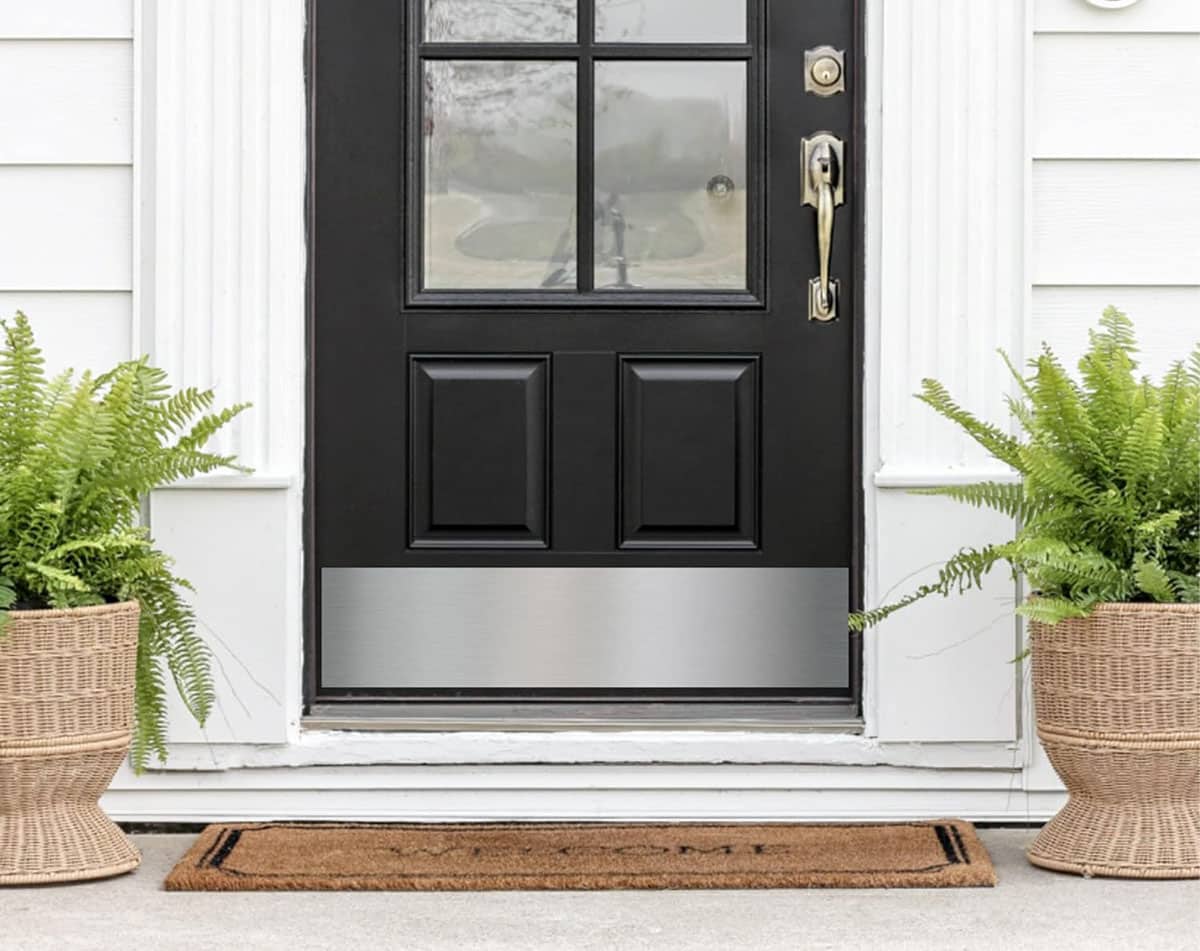
Most homeowners, DIYers, and contractors pick stainless steel over other materials because of its reliable strength and durability. Moreover, stainless steel has an uncanny sheen, giving the design a modern or contemporary look. It’s the perfect element for homes with shiny, silvery things.
Aluminum is a good alternative for families on a tight budget. However, this material is more prone to scratches and dents, making it unsuitable for doors subject to frequent bashing.
Meanwhile, chrome kick plates are excellent for adding pizazz to the home. Unfortunately, cost, maintenance requirements, and low impact resistance make chrome panels less favorable than stainless steel in high-traffic environments.
Difference Between a Mop Plate and a Door Base Plate
A kick plate’s lower limit is 6 inches or 15 centimeters, making any protective panel less than this measurement a “mop plate.” As the name suggests, mop plates provide a barrier against bumps and imapcts on the door when mopping the floor.
Visit our screen door size for more related content.


